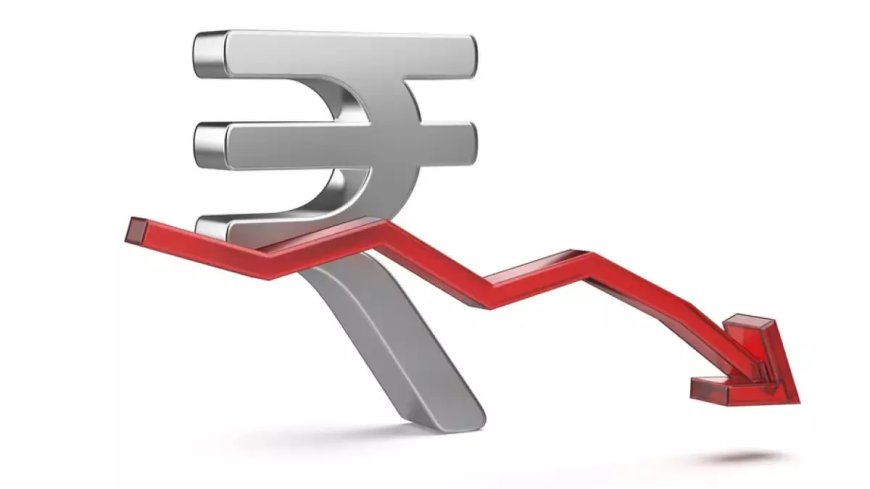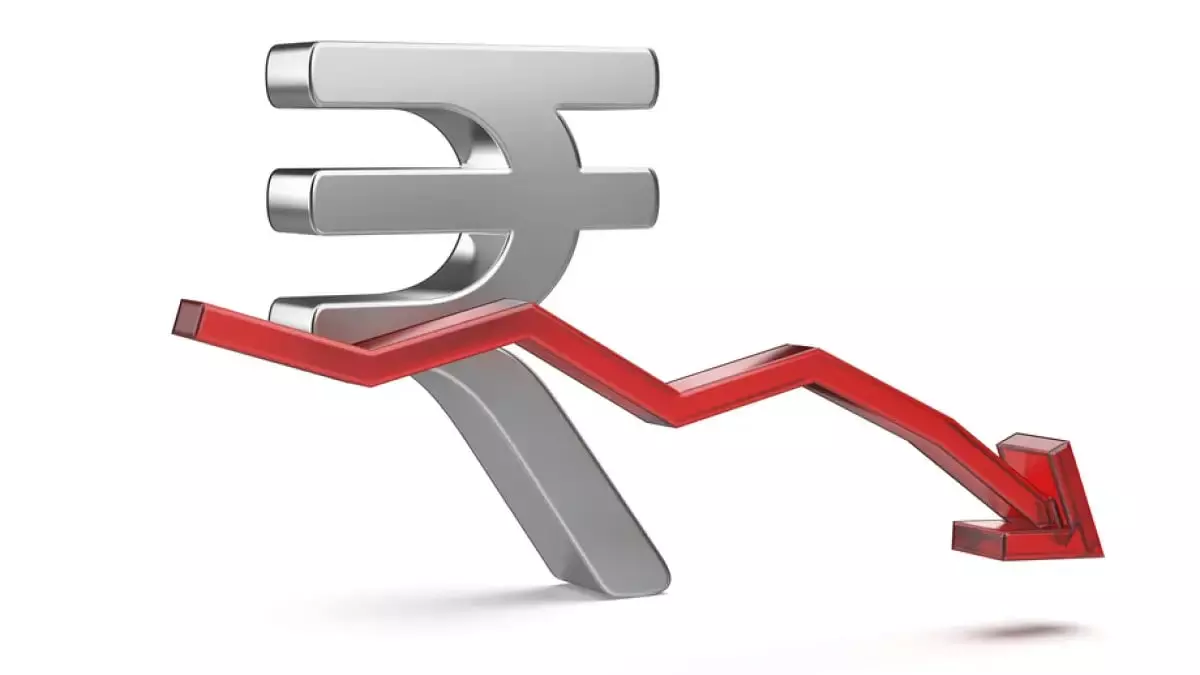Rupee tumbles 3 pc in 2024; turbulence to ebb in slow motion in next year
Mumbai:�The Indian rupee tumbled 3 per cent in 2024 as concerns over slower economic growth and the green buck's global strength weighed, but it was among the least volatile currencies in the world and the headwinds may be less intense in the coming year. Rupee settled at new lows as the year closed as dollar's resurgence weighed on emerging-market currencies. The action-packed 2024 continued to impact the rupee's exchange rate against major currencies throughout, with a series of geopolitical events ranging from the Russia-Ukraine war and crisis in the Middle East to trade disruptions in the Red Sea and elections across several major economies. Global factors, including measures taken by major central banks, have hit not only the rupee-dollar dynamics but also disrupted the exchange rates of currencies across all emerging economies. In fact, the rupee's fall with respect to the dollar has been less than its depreciation in terms of other currencies. And it has ended up with gains compared to euro and the Japanese yen. Reserve Bank of India's (RBI) ex-governor Shaktikanta Das also said in the central bank's December bi-monthly monetary policy that the Indian rupee has remained less volatile compared to its peers in emerging markets. Yet, the RBI has been more active in its efforts towards stabilising the rupee-dollar rate, thanks to increased demand for the greenback due to India's dependence on oil imports and the widening trade deficit. "RBI was also seen intervening actively in NDF (non-deliverable forward) markets to prevent sharp depreciation of the rupee," said Naveen Mathur, Director - Commodities & Currencies, Anand Rathi Shares and Stock Brokers. This was evident in foreign exchange reserves, which declined from the record high of USD 704.89 billion in late September to USD to USD 644.39 billion as of December 20, 2024, the lowest level in nearly six months. The foreign currency assets also include the effect of appreciation or depreciation of non-US units like the euro, pound and yen held in the foreign exchange reserves. India's external challenges intensified as China's GDP growth slowed to 4.8 per cent, reducing demand for Indian exports. Besides, supply chain disruptions due to tensions in the Middle East and escalated crisis in the Red Sea hit the trade balance of several countries, including India. The RBI's log of the daily exchange rate movement of rupee versus major currencies showed the domestic unit has depreciated against the greenback by almost 3 per cent from 83.19 level on January 1 to 85.59 on December 27 this year, with a record decline of Re 2 in the past two months. It breached the crucial 84 level on October 10, surpassed Rs 85-a-dollar mark on December 19 and even touched the life-time low of 85.80 during intra-day on December 27, recording the steepest single-day fall in nearly two years. However, the local unit has witnessed a gain of 8.7 per cent against yen rising from the rate of Rs 58.99 per 100 yen on January 1 to Rs 54.26 on December 27. And the gain was even increased to almost 9 per cent since September 17, when the rate hit the peak of Rs 59.63 per 100 units of the Japanese currency. Similarly, in terms of euro, the rupee registered a gain of over 5 per cent since its lowest level of Rs 93.75 a euro on August 27 to Rs 89.11 on December 27. Experts attributed the trend to the unprecedented rise in dollar strength due to improved macroeconomic factors in the US, which prompted the Federal Reserve to move slower towards easing monetary policy, and the outcome of the Presidential election in the world's largest economy. President-elect Donald Trump's declared intention to raise tariffs on Chinese imports spooked currency traders worldwide, triggering an unabated chase for the greenback, leading to the mass exodus of foreign capital from Indian equity markets. "The US dollar outperformed the market with 6.9 per cent gain in 2024. Improvement in the US economy, weakness in Europe and geopolitical concerns led to a surge in the US dollar, said Anuj Choudhary, Research Analyst at Mirae Asset Sharekhan. The most significant weakness in the rupee was observed in the latter half of 2024, particularly between October and December, driven by substantial Foreign Institutional Investors (FII) outflows, said Jateen Trivedi, VP Research Analyst - Commodity and Currency, LKP Securities. During this period, the Indian stock markets witnessed around Rs 1.70 lakh crore of FII outflows, "which weighed heavily on the rupee's performance", he said. However, the outlook for the Indian currency next year is relatively stable and projected to range between 82 and 87 against dollar, said Ajit Mishra, SVP, Research, Religare Broking Ltd. "A potential recovery may be supported by government policy measures and improvements in domestic economic growth," Mishra said. In 202


Mumbai:�The Indian rupee tumbled 3 per cent in 2024 as concerns over slower economic growth and the green buck's global strength weighed, but it was among the least volatile currencies in the world and the headwinds may be less intense in the coming year. Rupee settled at new lows as the year closed as dollar's resurgence weighed on emerging-market currencies.
The action-packed 2024 continued to impact the rupee's exchange rate against major currencies throughout, with a series of geopolitical events ranging from the Russia-Ukraine war and crisis in the Middle East to trade disruptions in the Red Sea and elections across several major economies.
Global factors, including measures taken by major central banks, have hit not only the rupee-dollar dynamics but also disrupted the exchange rates of currencies across all emerging economies.
In fact, the rupee's fall with respect to the dollar has been less than its depreciation in terms of other currencies. And it has ended up with gains compared to euro and the Japanese yen.
Reserve Bank of India's (RBI) ex-governor Shaktikanta Das also said in the central bank's December bi-monthly monetary policy that the Indian rupee has remained less volatile compared to its peers in emerging markets.
Yet, the RBI has been more active in its efforts towards stabilising the rupee-dollar rate, thanks to increased demand for the greenback due to India's dependence on oil imports and the widening trade deficit.
"RBI was also seen intervening actively in NDF (non-deliverable forward) markets to prevent sharp depreciation of the rupee," said Naveen Mathur, Director - Commodities & Currencies, Anand Rathi Shares and Stock Brokers.
This was evident in foreign exchange reserves, which declined from the record high of USD 704.89 billion in late September to USD to USD 644.39 billion as of December 20, 2024, the lowest level in nearly six months.
The foreign currency assets also include the effect of appreciation or depreciation of non-US units like the euro, pound and yen held in the foreign exchange reserves.
India's external challenges intensified as China's GDP growth slowed to 4.8 per cent, reducing demand for Indian exports. Besides, supply chain disruptions due to tensions in the Middle East and escalated crisis in the Red Sea hit the trade balance of several countries, including India.
The RBI's log of the daily exchange rate movement of rupee versus major currencies showed the domestic unit has depreciated against the greenback by almost 3 per cent from 83.19 level on January 1 to 85.59 on December 27 this year, with a record decline of Re 2 in the past two months.
It breached the crucial 84 level on October 10, surpassed Rs 85-a-dollar mark on December 19 and even touched the life-time low of 85.80 during intra-day on December 27, recording the steepest single-day fall in nearly two years.
However, the local unit has witnessed a gain of 8.7 per cent against yen rising from the rate of Rs 58.99 per 100 yen on January 1 to Rs 54.26 on December 27. And the gain was even increased to almost 9 per cent since September 17, when the rate hit the peak of Rs 59.63 per 100 units of the Japanese currency.
Similarly, in terms of euro, the rupee registered a gain of over 5 per cent since its lowest level of Rs 93.75 a euro on August 27 to Rs 89.11 on December 27.
Experts attributed the trend to the unprecedented rise in dollar strength due to improved macroeconomic factors in the US, which prompted the Federal Reserve to move slower towards easing monetary policy, and the outcome of the Presidential election in the world's largest economy.
President-elect Donald Trump's declared intention to raise tariffs on Chinese imports spooked currency traders worldwide, triggering an unabated chase for the greenback, leading to the mass exodus of foreign capital from Indian equity markets.
"The US dollar outperformed the market with 6.9 per cent gain in 2024. Improvement in the US economy, weakness in Europe and geopolitical concerns led to a surge in the US dollar, said Anuj Choudhary, Research Analyst at Mirae Asset Sharekhan.
The most significant weakness in the rupee was observed in the latter half of 2024, particularly between October and December, driven by substantial Foreign Institutional Investors (FII) outflows, said Jateen Trivedi, VP Research Analyst - Commodity and Currency, LKP Securities.
During this period, the Indian stock markets witnessed around Rs 1.70 lakh crore of FII outflows, "which weighed heavily on the rupee's performance", he said.
However, the outlook for the Indian currency next year is relatively stable and projected to range between 82 and 87 against dollar, said Ajit Mishra, SVP, Research, Religare Broking Ltd.
"A potential recovery may be supported by government policy measures and improvements in domestic economic growth," Mishra said.
In 2025, a number of global events are expected to influence the currency market trends. The most significant cues are expected to come from the US Federal Reserve's interest rate moves and President Donald Trump's trade measures that are likely to make Chinese imports costlier, fuelling inflation in the world's largest economy.
If the Trump administration adopts an ultra-protectionist stance, such an approach could disrupt global trade and capital flows, fuelling volatility across asset classes and currency markets, said Anindya Banerjee, SVP, Head of Research, Currency, Commodity & Interest Rates, Kotak Securities.
India's economic growth, projected at 6.5-7.5 per cent for 2025, could support the rupee, while monetary easing by the RBI to stimulate growth could hit the currency adversely.
"For 2025, we expect the rupee to fall to Rs 87/USD. The upside may be limited to Rs 83," Choudhary of Mirae Asset Sharekhan, said, adding that China's much-awaited fiscal stimulus in the first half and expected slowing down in the US economy in the second half will support the rupee later.The Indian rupee tumbled 3 per cent in 2024 as concerns over slower economic growth and the green buck's global strength weighed






































